The Life & Writings of Julius Evola
If the industrious man, through taking action,
Does not succeed, he should not be blamed for that –
He still perceives the truth.
~The Sauptikaparvan of the Mahābhārata (2,16)
If we could select a single aspect by which to define Julius Evola, it would have been his desire to transcend the ordinary and the world of the profane. It was characterized by a thirst for the Absolute, which the Germans call mehr als leben – “more than living.” This idea of transcending worldly existence colours not only his ideas and philosophy, it is also evident throughout his life which reads like a litany of successes. During the earlier years Evola excelled at whatever he chose to apply himself to: his talents were evident in the field of literature, for which he would be best remembered, and also in the arts and occult circles.
Born in Rome on the 19th of May in 1898, Giulio Cesare Andrea Evola was the son of an aristocratic Sicilian family, and like many children born in Sicily, he had received a stringent Catholic upbringing. As he recalled in his intellectual autobiography, Il cammino del cinabro [1963, 1972, The Cinnabar's Journey], his favourite pastimes consisted of painting, one of his natural talents, and of visiting the library as often as he could in order to read works by Oscar Wilde, Friedrich Nietzsche, and Otto Weininger.[1] During his youth he also studied engineering, receiving excellent grades but chose to discontinue his studies prior to the completion of his doctorate, because he "did not wish to be bourgeois, like his fellow students." At the age of nineteen Evola joined the army and participated in World War I as a mountain artillery officer. This experience would serve as an inspiration for his use of mountains as metaphors for solitude and ascension above the chthonic forces of the earth. Evola was also a friend of Mircea Eliade, who kept in correspondence with Evola from 1927 until his death. He was also an associate of the Tibetologist Giuseppe Tucci and the Tantric scholar Sir John Woodroffe (Arthur Avalon).
 |
| Sir John Woodroffe |
During his younger years Evola was briefly involved in art circles, and despite this being only a short lived affair, it was also a time that brought him great rewards. Though he would later denounce Dada as a decadent form of art it was within the field of modern art that Evola first made his name, taking a particular interest in Marinetti and Futurism. His oil painting, Inner Landscape, 10:30 a.m., is hanging today on a wall of the National Gallery of Modern Art in Rome.[2] He also composed Arte Astratta (Abstract Art) but later, after experiencing a personal crisis, turned to the study of Nietzsche, from which sprang his Teoria dell, individuo assoluto (Theory of the Absolute Individual) in 1925. By 1921 Evola had abandoned the pursuit of art as the means to place his unique mark on the world. The revolutionary attitudes of Marinetti, the Futurist movement and the so-called avant-garde which had once fascinated him, no longer appeared worthwhile to Evola with their juvenile emphasis on shocking the bourgeois. Likewise, despite being a talented poet, Evola (much like another of his inspirations – Arthur Rimbaud) abandoned poetry at the age of twenty four. Evola did not write another poem nor paint another picture for over forty years. Thus, being no longer enamored of the arts, Evola chose instead to pursue another field entirely that he would one day award him even greater acclaim.
To this day, the magical workings of the Ur Group and its successor Krur remain as some of the most sophisticated techniques for the practice of esoteric knowledge laid down in the modern Western era. Based on a variety of primary sources, ranging from Hermetic texts to advanced Yogic techniques, Evola occupied a prominent role in both of these groups. He wrote a number of articles for Ur and edited many of the others. These articles were collected in the book Introduction to Magic: Rituals and Practical Techniques for the Magus, which alongside Evola’s articles, are included the works of Arturo Reghini, Giulio Parese, Ercole Quadrelli and Gustave Meyrink. The original title of this work in Italian, Introduzione alla Magia quale scienza dell’lo, literally translates as Introduction to Magic as a Science of the “I”.[3] In this sense, the 'I' is best interpreted as the ego, or the manipulation of the will – an idea which is also the found in the work of that other famous magician, Aleister Crowley and his notion of Thelema. The original format of Ur was as a monthly publication, of which the first issue was printed in January 1927.[4]
Contributors to this publication included Count Giovanni di Caesaro, a Steinerian, Emilio Servadio, a distinguished psychoanalyst, and Guido de Giorgio, a well-known adherent of Rudolph Steiner and an author of works on the Hermetic tradition. It was during this period, that he was introduced to Arturo Reghini, whose ideas would leave a lasting impression on Evola. Arturo Reghini (1878-1946), who was interested in speculative Masonry and the anthroposophy of Rudolf Steiner, introduced Evola to Guénon's writings and invited him to join the Ur group. Ur and its successor, Krur, gathered together a number of people interested in Guénon's exposition of the Hermetic tradition and in Vedanta, Taoism, Buddhism, Tantra, and magic.
Arturo Reghini was to be a major influence on Evola, and himself was a representative of the so-called Italian School (Scuola Italica), a secret order which claimed to have survived the downfall of the Roman Empire, to have re-emerged with Emperor Frederic II, and to have inspired the Florentine poets of the thirteenth and fourteenth centuries, up to Petrarch. Like Evola, Reghini had also written articles, one of which was entitled "Pagan Imperialism." This appeared in Salamandra in 1914, and in it Reghini summed up his anti-Catholic program for a return to a glorious pagan past. This piece had a profound impact on Evola, and it served as the inspiration for his similarly titled Imperialismo pagano. Imperialismo pagano, chronicling the negative effects of Christianity on the world, appeared in 1928. In the context of this work, Evola is the advocate of an anti-Roman Catholic pagan imperialism. According to Evola, Christianity had destroyed the imperial universality of the Roman Empire by insisting on the separation of the secular and the spiritual. It is from this separation that arose the inherent decadence and inward decay of the modern era. Out of Christianity’s implacable opposition to the healthy paganism of the Mediterranean world arose the secularism, democracy, materialism, scientism, socialism, and the "subtle Bolshevism" that heralded the final age of the current cosmic cycle: the age of "obscurity" the Kali-Yuga.[5] Imperialismo pagano was to be later revised in a German edition as Heidnischer Imperialismus. The changes that occurred in the text of Evola’s Imperialismo pagano in its translation as Heidnischer Imperialismus five years later were not entirely inconsequential. Although the fundamental concepts that comprised the substance of Evola’s thought remained similar, a number of critical elements were altered that would transform a central point in Evola's thinking. The "Mediterranean tradition" of the earlier text is consistently replaced with the "Nordic-solar tradition" in this translation.[6] In 1930 Evola founded his own periodical, La Torre (The Tower). La Torre, the heir to Krur, differed from the two earlier publications Ur and Krur in the following way, as was announced in an editorial insert:
"Our Activity in 1930 – To the Readers: Krur is transforming. Having fulfilled the tasks relative to the technical mastery of esotericism we proposed for ourselves three years ago, we have accepted the invitation to transfer our action to a vaster, more visible, more immediate field: the very plane of Western 'culture' and the problems that, in this moment of crisis, afflict both individual and mass consciousness […] for all these reasons Krur will be changed to the title La Torre (The Tower), a work of diverse expressions and one Tradition."[7]
La Torre was attacked by official fascist bodies such as L’Impero and Anti-Europa, and publication of La Torre ceased after only ten issues. Evola also contributed an article entitled Fascism as Will to Imperium and Christianity to the review Critica Fascista, edited by Evola's old friend Giuseppi Bottai. Here again he launches vociferous opposition to Christianity and attests to its negative effects, evident in the rise of a pious, hypocritical, and greedy middle class lacking in all superior solar virtues that Evola attributed to ancient Rome. The article did not pass unnoticed and was vigorously attacked in many Italian periodicals. It was also the subject of a long article in the prestigious Revue Internationale des Sociétés Secrètes (Partie Occultiste) for April 1928, under the title Un Sataniste Italien: Jules Evola.
Coupled with the notoriety of Evola's La Torre, was also another, more bizarre incident involving the Ur Group's reputation, and their attempts to form a "magical chain." Although these attempts to exert supernatural influence on others were soon abandoned, a rumour quickly developed that the group had wished to kill Mussolini by these means. Evola describes this event in his autobiography Il Cammino del Cinabro.
"Someone reported this argument [that the death of a head of state might be brought about by magic] and some yarn about our already dissolved 'chain of Ur' may also have been added, all of which led the Duce to think that there was a plot to use magic against him. But when he heard the true facts of the matter, Mussolini ceased all action against us. In reality Mussolini was very open to suggestion and also somewhat superstitious (the reaction of a mentality fundamentally incapable of true spirituality). For example, he had a genuine fear of fortune-tellers and any mention of them was forbidden in his presence."
It was also during this period that Evola also discovered something which was to become a profound influence on many his ideas: the lost science of Hermeticism. Though he undoubtedly came into contact with this branch of mysticism through Reghini and fellow members of Ur, it seems that Evola’s extraordinary knowledge of Hermeticism actually arose from another source. Jacopo da Coreglia writes that it was a priest, Father Francesco Olivia, who had made the most far-reaching progress in Hermetic science and – sensing a prodigious student – granted Evola access to documents that were usually strictly reserved for adepts of the narrow circle. These were concerned primarily with the teachings of the Fraternity of Myriam (Fratellanza Terapeutica Magica di Myriam), founded by Doctor Giuliano Kremmerz, pseudonym of Ciro Formisano (1861-1930). Evola mentions in The Hermetic Tradition that Myriam’s Pamphlet D laid the groundwork for his understanding of the four elements.[8] Evola’s knowledge of Hermeticism and the alchemical arts was not limited to Western sources either, for he also knew an Indian alchemist by the name of C.S. Narayana Swami Aiyar of Chingleput.[9] During this era of history, Indian alchemy was almost completely unknown to the Western world, and it is only in modern times that it has been studied in relation to the occidental texts.
 |
| M is for Mussolini (not Murder) |
In 1926 Evola published an article in Ultra (the newspaper of the Theosophical Lodge in Rome) on the cult of Mithras in which he placed major emphasis on the similarities of these mysteries with Hermeticism.[10] During this period he also wrote Saggi sull’idealismo magico (1925; Essays on Magic Idealism), and L’individuo ed il divenire del mondo (1926; The Individual and the Becoming of the World). This article was to be followed by the publication of his treatise on alchemy, La Tradizione ermetica (The Hermetic Tradition). Such was the scope and depth of this work that Karl Jung even quoted Evola to support his own contention that "the alchemical opus deals in the main not just with chemical experiments as such, but also with something resembling psychic processes expressed in pseudo-chemical language."[11] Unfortunately, the support expressed by Jung was not mutual, for Evola did not accept Jung's hypothesis that alchemy was merely a psychic process.
Taking issue with René Guénon's (1886-1951) view that spiritual authority ranks higher than royal power, Evola wrote L’uomo come potenza (Man as power); in the third revised edition (1949), the title was changed to Lo yoga della potenza (The yoga of power).[12] This was Evola's treatise of Hindu Tantra, for which he consulted primary sources on Kaula Tantra, which at the time were largely unknown in the Western world. Decio Calvari, president of the Italian Independent Theosophical League, introduced Evola to the study of Tantrism.[13] Evola was also granted access to authentic Tantric texts directly from the Kaula school of Tantrism via his association with Sir John Woodroofe, who was not only a respected scholar, but was also a Tantric practitioner himself, under the famous pseudonym of Arthur Avalon. A substantial proportion of The Yoga of Power is derived from Sir John Woodroofe's personal notes on Kaula Tantrism. Even today Woodroofe is regarded as a leading pioneer in the early research of Tantrism.
Evola's opinion that the royal or Ksatriya path in Tantrism outranks that of the Brahmanic or priestly path, is readily supported by the Tantric texts themselves, in which the Vira or active mode of practice is exalted above that of the priestly mode in Kaula Tantrism. In this regard, the heroic or solar path of Tantrism represented to Evola, a system based not on theory, but on practice – an active path appropriate to be taught in the degenerate epoch of the Hindu Kali Yuga or Dark Age, in which purely intellectual or contemplative paths to divinity have suffered a great decrease in their effectiveness.
In the words of Evola himself:
"During the last years of the 1930s I devoted myself to working on two of my most important books on Eastern wisdom: I completely revised L’uomo come potenza (Man As Power), which was given a new title, Lo yoga della potenza (The Yoga of Power), and wrote a systematic work concerning primitive Buddhism entitled La dottrina del risveglio (The Doctrine of Awakening)."[14]
Evola's work on the early history of Buddhism was published in 1943. The central theme of this work is not the common view of Buddhism, as a path of spiritual renunciation – instead it focuses on the Buddha's role as a Ksatriya ascetic, for it was to this caste that he belonged, as is found in early Buddhist records.
The historical Siddharta was a prince of the Śakya, a kṣatriya (belonging to the warrior caste), an "ascetic fighter" who opened a path by himself with his own strength. Thus Evola emphasizes the "aristocratic" character of primitive Buddhism, which he defines as having the "presence in it of a virile and warrior strength (the lion's roar is a designation of Buddha’s proclamation) that is applied to a nonmaterial and atemporal plane…since it transcends such a plane, leaving it behind." [15]
 |
| Siddharta's warrior youth. |
The book considered by many to be Evola’s masterpiece, Revolt Against the Modern World was published in 1934, and was influenced by Oswald Spengler's Decline of the West (1918) and René Guénon's The Crisis of the Modern World (1927), both of which had been previously translated into Italian by Evola. Spengler's contribution in this regard was the plurality of civilizations, which then fell into patterns of birth, growth and decline. This was combined with Guénon's ideas on the "Dark Age" or Hindu Kali Yuga, which similarly portrays a bleak image of civilizations in decline. The work also draws upon the writings of Bachofen in regards to the construction of a mythological grounding for the history of civilizations. The original version of Julius Evola's The Mystery of the Grail formed an appendix to the first edition of Rivolta contra il mondo moderno, and as such is closely related to this work.[16] Three years later he reworked that appendix into the present book, which first appeared as part of a series of religious and esoteric studies published by the renowned Laterza Publishers in Italy, whose list included works by Sigmund Freud, Richard Wilhelm, and C. G. Jung, among others. In this book Evola writes three main premises concerning the Grail myths: That the Grail is not a Christian Mystery, but a Hyperborean one, that it is a mystery tradition, and that it deals with a restoration of sacred regality. Evola describes his work on the Grail in the epilogue to the first edition (1937).
"To live and understand the symbol of the Grail in its purity would mean today the awakening of powers that could supply a transcendental point of reference for it, an awakening that could show itself tomorrow, after a great crisis, in the form of an “epoch that goes beyond nations.” It would also mean the release of the so-called world revolution from the false myths that poison it and that make possible its subjugation through dark, collectivistic, and irrational powers. In addition, it would mean understanding the way to a true unity that would be genuinely capable of going beyond not only the materialistic – we could say Luciferian and Titanic – forms of power and control but also the lunar forms of the remnants of religious humility and the current neospiritualistic dissipation."[17]
Another of Evola’s books, Eros and the Mysteries of Love, could almost be seen as a continuation of his experimentation with Tantrism. Indeed, the book does not deal with the erotic principle in the normal of sense of the word, but rather approaches the topic as a highly conceptualized interplay of polarities, adopted from the Traditional use of erotic elements in eastern and western mysticism and philosophy. Thus what is described here is the path to sacred sexuality, and the use of the erotic principle to transcend the normal limitations of consciousness. Evola describes his book in the following passage:
"But in this study, metaphysics will also have a second meaning, one that is not unrelated to the world's origin since 'metaphysics' literally means the science of that which goes beyond the physical. In our research, this 'beyond the physical' will not cover abstract concepts or philosophical ideas, but rather that which may evolve from an experience that is not merely physical, but transpsychological and transphysiological. We shall achieve this through the doctrine of the manifold states of being and through an anthropology that is not restricted to the simple soul-body dichotomy, but is aware of 'subtle' and even transcendental modalities of human consciousness. Although foreign to contemporary thought, knowledge of this kind formed an integral part of ancient learning and of the traditions of varied peoples."[18]
Another of Evola's major works is Meditations Among the Peaks, wherein mountaineering is equated to ascension. This idea is found frequently in a number of Traditions, where mountains are often revered as an intermediary between the forces of heaven and earth. Evola was an accomplished mountaineer and completed some difficult climbs such as the north wall of the Eastern Lyskam in 1927. He also requested in his will that after his death the urn containing his ashes be deposited in a glacial crevasse on Mount Rosa.
Evola's main political work was Men Among the Ruins. This was to be the ninth of Evola's books to published in English. Written at the same time as Men Among the Ruins, Evola composed Ride the Tiger which is complementary to this work, even though it was not published until 1961. These books belong together and cannot really be judged separately. Men among the Ruins shows the universal standpoint of ideal politics; Riding the Tiger deals with the practical "existential" perspective for the individual who wants to preserve his "hegomonikon" or inner sovereignty.[19] Ride the Tiger is essentially a philosophical set of guidelines entwining various strands of his earlier thought into a single work. Underlying the more obvious sources, which Evola cites within the text, such as Nietzsche, Sartre and Heidegger, there are also connections with Hindu thoughts on the collapse of civilization and the Kali Yuga. In many ways, this work is the culmination of Evola's thought on the role of Tradition in the Age of Darkness – that the Traditional approach advocated in the East is to harness the power of the Kali Yuga, by ‘Riding the Tiger’ – which is also a popular Tantric saying. To this extent, it is not an approach of withdrawal from the modern world which Evola advocates, but instead achieving a mastery of the forces of darkness and materialism inherent in the Kali Yuga. Similarly, his attitude to politics alters here from that expressed in Men Among the Ruins, calling instead for a type of individual that is apoliteia.
"[...] this type can only feel disinterested and detached from everything that is 'politics' today. His principle will become apoliteia, as it was called in ancient times. [...] Apoliteia is the distance unassailable by this society and its 'values'; it does not accept being bound by anything spiritual or moral."[20]
In addition to Evola’s main corpus of texts mentioned previously, he also published numerous other works such as The Way of the Samurai, The Path of Enlightenment According to the Mithraic Mysteries, Il Cammino del Cinabro, Taoism: The Magic, The Mysticism and The Bow and the Club. He also translated Oswald Spengler's Decline of the West, as well as the principle works of Bachofen, Guénon, Weininger and Gabriel Marcel.
In 1945 Evola was hit by a stray bomb and paralyzed from the waist downwards. He died on June 11, 1974 in Rome. He had asked to be led from his desk to the window from which one could see the Janiculum (the holy hill sacred to Janus, the two-faced god who gazes into this and the other world), to die in an upright position. After his death the body was cremated and his ashes were scattered in a glacier atop Mount Rosa, in accordance with his wishes.
Gwendolyn Taunton is the editor and sole founder of Primordial Traditions. This article is reprinted from Primordial Traditions (second edition).NOTES [1] Julius Evola, The Yoga of Power, Shakti, and the Secret Way (Vermont: Inner Traditions, 1992) ix [2] ibid., x [3] Julius Evola, Introduction to Magic: Rituals and Practical Techniques for the Magus (Vermont: Inner Traditions, 2001) ix [4] ibid., xvii [5] A. James Gregor, Mussolini's Intellectuals (New Jersey: Princeton University Press, 2005) [6] ibid., 201 [7] Julius Evola, Introduction to Magic: Rituals and Practical Techniques for the Magus (Vermont: Inner Traditions, 2001) xxi [8] Julius Evola, The Hermetic Tradition: Symbols and Teaching of the Royal Art (Vermont: Inner Traditions, 1992) ix [9] ibid., ix [10] ibid., viii [11] Julius Evola, The Yoga of Power, Shakti, and the Secret Way (Vermont: Inner Traditions, 1992) xii [12] ibid., xiv [13] ibid., xiii [14] Julius Evola, The Doctrine of the Awakening: The Attainment of Self-Mastery According to the Earliest Buddhist Texts (Vermont: Inner Traditions, 1992) xi [15] ibid., xv [16] Julius Evola, The Mystery of the Grail: Initiation and Magic in the Quest for the Spirit (Vermont: Inner Traditions, 1997) vii [17] ibid., ix [18] Julius Evola, Eros and the Mysteries of Love: The Metaphysics of Sex (Vermont: Inner Traditions, 1991) 2 [19] Julius Evola, Men Among the Ruins: Post-War Reflections of a Radical Traditionalist (Vermont: Inner Traditions, 2003) 89 [20] Julius Evola, Ride the Tiger: A Survival Manual for Aristocrats of the Soul (Vermont: Inner Traditions, 2003) 174-175







 del.icio.us
del.icio.us
 Digg
Digg





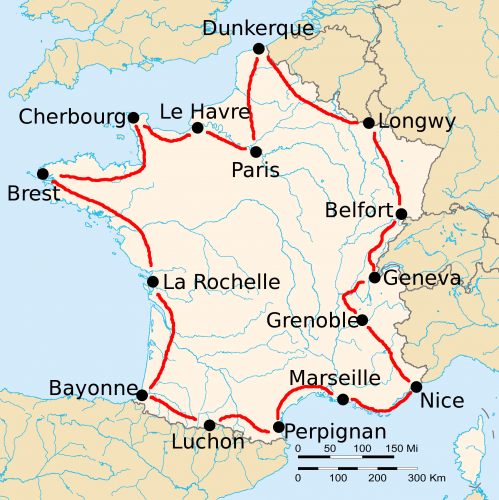
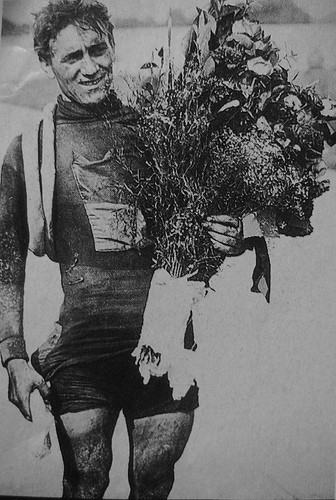
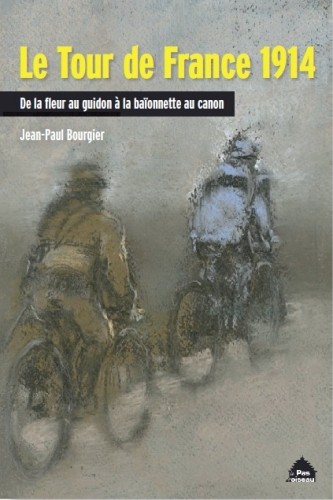 La Coupe du monde de football vient de se terminer; les amateurs de sports tournent leur regard, comme chaque mois de juillet, vers le Tour de France cycliste. La plus célèbre course de vélos du monde se déroule aujourd'hui à l'ombre de celle de 1914, cent ans après que la première guerre mondiale ait éclaté. Le départ d'une étape à Ypres, le passage du peloton le long du champ de bataille de Verdun, les longues étapes en Alsace et en Lorraine en sont la preuve. L'étape qui s'est déroulée sur les pavés du Nord a été, elle aussi, un hommage aux morts de la première guerre mondiale, parce que l'expression "l'enfer du Nord" est née en 1919, quand le parcours de la course Paris-Roubaix était particulièrement sinistre et difficile. Les voies "carrossables" avaient été labourées par les artilleries française, britannique et allemande.
La Coupe du monde de football vient de se terminer; les amateurs de sports tournent leur regard, comme chaque mois de juillet, vers le Tour de France cycliste. La plus célèbre course de vélos du monde se déroule aujourd'hui à l'ombre de celle de 1914, cent ans après que la première guerre mondiale ait éclaté. Le départ d'une étape à Ypres, le passage du peloton le long du champ de bataille de Verdun, les longues étapes en Alsace et en Lorraine en sont la preuve. L'étape qui s'est déroulée sur les pavés du Nord a été, elle aussi, un hommage aux morts de la première guerre mondiale, parce que l'expression "l'enfer du Nord" est née en 1919, quand le parcours de la course Paris-Roubaix était particulièrement sinistre et difficile. Les voies "carrossables" avaient été labourées par les artilleries française, britannique et allemande. 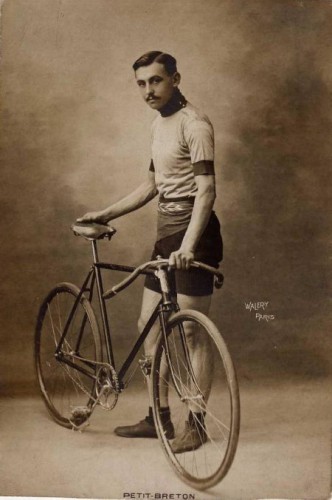 Les médias ont consacré quelques minutes d'attention aux vainqueurs du Tour avant 1914 (le premier Tour a eu lieu en 1903), qui n'ont pas survécu à la première guerre mondiale. Ainsi, Lucien Petit-Breton, vainqueur en 1907 et en 1908, le Luxembourgeois François Faber, vainqueur en 1909, et Octave Lapize, vainqueur en 1910. Petit-Breton a eu une fin misérable: courrier dans l'armée française, il a été renversé par une calèche menée par un cocher ivre. On n'a jamais retrouvé de traces du Luxembourgeois Faber, engagé dans la Légion Etrangère. Il combattait dans la région de la Somme et a disparu le 9 mai 1915 lors d'un combat à proximité d'Arras. Lapize, peut-on dire, a eu la mort du héros: pilote d'un avion de reconnaissance de la toute jeune aviation française, il a été abattu le 14 juillet 1917 en Lorraine.
Les médias ont consacré quelques minutes d'attention aux vainqueurs du Tour avant 1914 (le premier Tour a eu lieu en 1903), qui n'ont pas survécu à la première guerre mondiale. Ainsi, Lucien Petit-Breton, vainqueur en 1907 et en 1908, le Luxembourgeois François Faber, vainqueur en 1909, et Octave Lapize, vainqueur en 1910. Petit-Breton a eu une fin misérable: courrier dans l'armée française, il a été renversé par une calèche menée par un cocher ivre. On n'a jamais retrouvé de traces du Luxembourgeois Faber, engagé dans la Légion Etrangère. Il combattait dans la région de la Somme et a disparu le 9 mai 1915 lors d'un combat à proximité d'Arras. Lapize, peut-on dire, a eu la mort du héros: pilote d'un avion de reconnaissance de la toute jeune aviation française, il a été abattu le 14 juillet 1917 en Lorraine.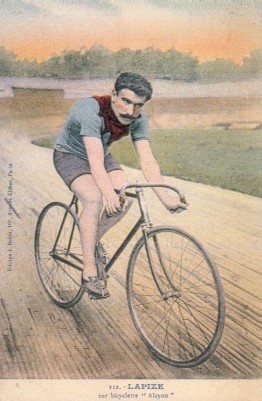 Le hasard a voulu que le Tour de 1914 ait commencé le 28 juin, le jour même où l'héritier du trône impérial austro-hongrois et son épouse la Comtesse Sophie Chotek ont été assassinés à Sarajevo par l'activiste Gavrilo Princip. Cet assassinat a été le coup d'envoi de la première grande conflagration mondiale mais on ne l'imaginait pas encore quand le départ du Tour a été donné. Pendant la première étape, d'Abbeville au Tréport, personne n'a songé aux événements qui venaient de marquer l'Empire austro-hongrois.
Le hasard a voulu que le Tour de 1914 ait commencé le 28 juin, le jour même où l'héritier du trône impérial austro-hongrois et son épouse la Comtesse Sophie Chotek ont été assassinés à Sarajevo par l'activiste Gavrilo Princip. Cet assassinat a été le coup d'envoi de la première grande conflagration mondiale mais on ne l'imaginait pas encore quand le départ du Tour a été donné. Pendant la première étape, d'Abbeville au Tréport, personne n'a songé aux événements qui venaient de marquer l'Empire austro-hongrois. 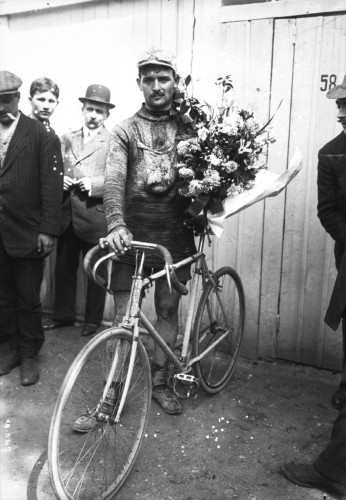 Le Tour de France de 1914 s'est déroulé sans le moindre souci. A Cherbourg, les coureurs se trouvaient dans le même hôtel que la figure de proue du socialisme français, Jean Jaurès, avec qui ils ont plaisanté. Juste avant que n'éclate la guerre, cet homme politique a été assassiné. On pouvait déceler bien des indices prouvant la tension croissante entre puissances européennes mais les coureurs en riaient, en disant que des événements plus graves avaient ponctué la politique internationale au cours des quinze dernières années.
Le Tour de France de 1914 s'est déroulé sans le moindre souci. A Cherbourg, les coureurs se trouvaient dans le même hôtel que la figure de proue du socialisme français, Jean Jaurès, avec qui ils ont plaisanté. Juste avant que n'éclate la guerre, cet homme politique a été assassiné. On pouvait déceler bien des indices prouvant la tension croissante entre puissances européennes mais les coureurs en riaient, en disant que des événements plus graves avaient ponctué la politique internationale au cours des quinze dernières années. 